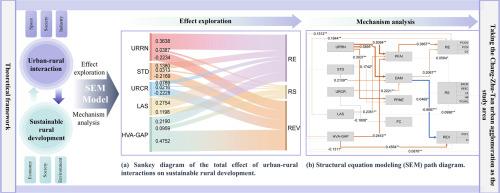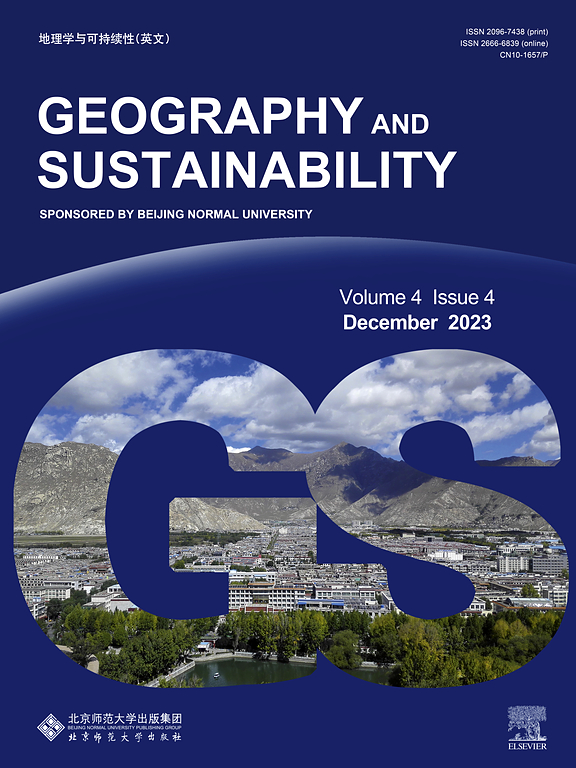城乡互动如何促进农村可持续发展:来自长株潭城市群的证据
IF 8
1区 环境科学与生态学
Q1 GEOGRAPHY, PHYSICAL
引用次数: 0
摘要
促进城乡良性互动是解决农村衰退、推进区域可持续发展的关键战略。本研究考察了城乡互动对农村发展的影响,并探讨了其促进城市群地区可持续发展的机制。以长株潭城市群为例,构建城乡互动与农村可持续发展测度指标体系,通过构建中介模型,分析城乡互动过程中资源流动对农村可持续发展的中介效应。研究结果表明,城乡空间连通性、产业融合和社会融合对农村经济社会可持续发展具有正向促进作用。然而,城乡空间连通性和社会一体化可能对农村环境产生负面影响。在这一过程中,资本、技术和劳动力的中介作用显著,而土地的中介作用不明显。基于这些发现,我们提出了一些建议,以战略性地利用城乡互动在各种社会生态背景下的好处,同时减轻其缺点。本文章由计算机程序翻译,如有差异,请以英文原文为准。

How urban–rural interactions promote sustainable rural development: Evidence from the Chang–Zhu–Tan urban agglomeration, China
Promoting positive urban–rural interactions is a key strategy for addressing rural decline and advancing regional sustainable development. This study examines the impacts of urban–rural interactions on rural development and explores their mechanisms for advancing sustainability within urban agglomeration areas. Using the Chang–Zhu–Tan (CZT) urban agglomeration as a case study, with an indicator system to measure urban–rural interactions and rural sustainable development, we analyze the mediating effects of resource flows in the process of urban–rural interactions driving rural sustainability through a mediation model. The results show that spatial connectivity, industrial convergence, and social integration between urban and rural areas positively contribute to the economic and social sustainability of rural areas. However, urban–rural spatial connectivity and social integration may negatively impact on rural environment. In this process, capital, technology, and labor play significant mediating roles, whereas the influence of land is less pronounced. Based on these findings, we propose several recommendations for strategically leveraging the benefits of urban–rural interactions across various social-ecological contexts while mitigating their drawbacks.
求助全文
通过发布文献求助,成功后即可免费获取论文全文。
去求助
来源期刊

Geography and Sustainability
Social Sciences-Geography, Planning and Development
CiteScore
16.70
自引率
3.10%
发文量
32
审稿时长
41 days
期刊介绍:
Geography and Sustainability serves as a central hub for interdisciplinary research and education aimed at promoting sustainable development from an integrated geography perspective. By bridging natural and human sciences, the journal fosters broader analysis and innovative thinking on global and regional sustainability issues.
Geography and Sustainability welcomes original, high-quality research articles, review articles, short communications, technical comments, perspective articles and editorials on the following themes:
Geographical Processes: Interactions with and between water, soil, atmosphere and the biosphere and their spatio-temporal variations;
Human-Environmental Systems: Interactions between humans and the environment, resilience of socio-ecological systems and vulnerability;
Ecosystem Services and Human Wellbeing: Ecosystem structure, processes, services and their linkages with human wellbeing;
Sustainable Development: Theory, practice and critical challenges in sustainable development.
 求助内容:
求助内容: 应助结果提醒方式:
应助结果提醒方式:


